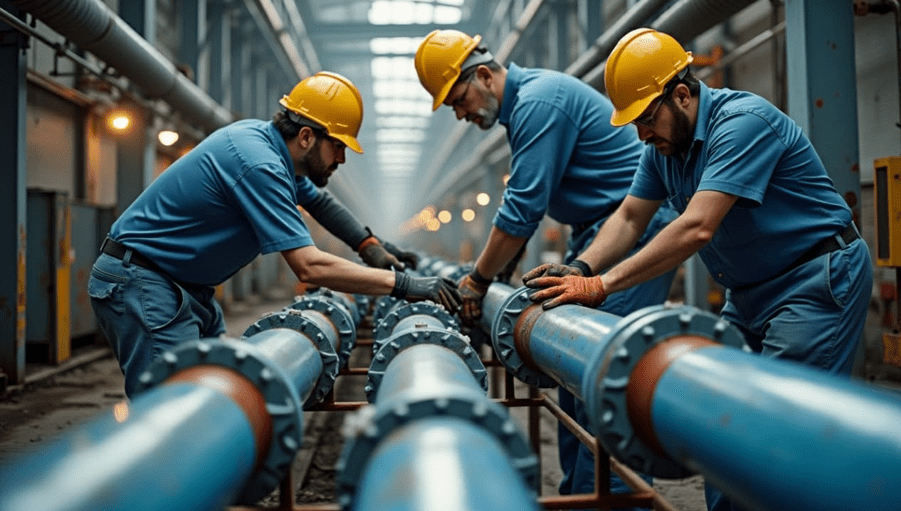Industrial piping systems are essential for transporting fluids, gases, and other materials in various industries. However, they often face challenges that can impact efficiency, safety, and costs. Here are some common issues and how to address them:

Industrial piping systems are essential for transporting fluids, gases, and other materials in various industries. However, they often face challenges that can impact efficiency, safety, and costs. Here are some common issues and how to address them:
Over time, pipes can corrode due to exposure to chemicals, moisture, and extreme temperatures. This weakens the structure and can lead to leaks or failures.
Use corrosion-resistant materials like stainless steel or PVC, apply protective coatings, and implement regular inspections to detect early signs of degradation
Accumulation of debris, scale, or sediment can restrict flow and reduce efficiency.
Regular cleaning and maintenance, using filtration systems, and selecting the right pipe diameter can prevent clogging.
Leaks, pipe bends, and improper sizing can cause pressure drops, affecting performance.
Ensure proper pipe sizing, minimize unnecessary bends, and regularly check for leaks. Installing pressure regulators can also help maintain optimal flow.
Extreme temperature changes can cause pipes to expand or contract, leading to cracks or misalignment.
Use expansion joints and flexible materials in high-temperature environments. Insulating pipes can also help manage temperature fluctuations.
Pipes can suffer from physical damage due to vibrations, external forces, or improper handling.
Secure pipes with proper supports, use vibration dampeners, and conduct routine inspections to identify and repair any damage early.
Industrial piping systems require regular monitoring and proactive maintenance to function efficiently. By understanding and addressing these challenges, businesses can improve safety, reduce costs, and extend the lifespan of their piping infrastructure.








